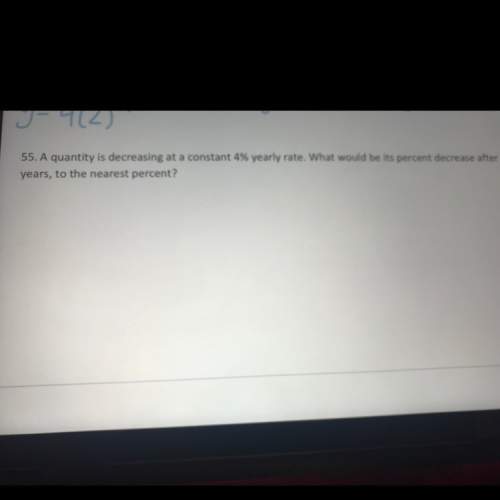Me i'm begging
let us consider a rather routine problem of laying a brick patio.
<...

Mathematics, 18.12.2019 10:31 formulabmath
Me i'm begging
let us consider a rather routine problem of laying a brick patio.
english system vs. metric system
problem: how many bricks 3.75 in. wide x 8 in. long problem: how many bricks 9.5 cm wide x 20 cm long
are required to cover a patio 16 ft. 3 in. wide are required to cover a patio 5 meters wide
by 19 ft. 8 in. long? by 6 meters long?
step 1. first, find the total width and length of the step 1. first, find the area of the patio in square cm.
patio in inches.
step 1a. convert the width and length in meters to cm:
step 1a. convert the portion of width and length width: 5 m = 5 x
a0 =
a1 cm
that is expressed in feet to inches: length: 6 m = 6 x
a2 =
a3 cm
width: 16 ft. = 16 x
a4 =
a5 in.
length: 19 ft. = 19 x
a6 =
a7 in. step 1b. find the area of the patio in square cm
by multiplying its width by its length:
step 1b. add these values to the portion of the width
a8 cm x
a9 cm =
a10 cm²
and length of the patio expressed in inches
to find totals:
total width:
a11 in. + 3 in. =
a12 in. step 2. find the area of each brick in square cm
total length:
a13 in. + 8 in. =
a14 in. by multiplying its width by its length:
a15 cm x
a16 cm =
a17 cm²
step 2. find the area of the patio in square inches by
multiplying its total width by its total length: step 3. find the number of bricks needed by dividing
a18 in. x
a19 in. =
a20 in.² the patio area by the brick area (round up to
the nearest whole brick):
step 3. find the area of each brick in square inches
a21/
a22 =
a23 bricks
by multiplying its width by its length:
a24 in. x
a25 in. =
a26 in.²
step 4. find the number of bricks needed by dividing
the patio area by the brick area (round up to
the nearest whole brick):
a27/
a28 =
a29 bricks

Answers: 1


Another question on Mathematics

Mathematics, 21.06.2019 16:20
Browning labs is testing a new growth inhibitor for a certain type of bacteria. the bacteria naturally grows exponentially each hour at a rate of 6.2%. the researchers know that the inhibitor will make the growth rate of the bacteria less than or equal to its natural growth rate. the sample currently contains 100 bacteria.the container holding the sample can hold only 300 bacteria, after which the sample will no longer grow. however, the researchers are increasing the size of the container at a constant rate allowing the container to hold 100 more bacteria each hour. they would like to determine the possible number of bacteria in the container over time.create a system of inequalities to model the situation above, and use it to determine how many of the solutions are viable.
Answers: 1

Mathematics, 21.06.2019 20:00
Suppose a store sells an average of 80 cases of soda per day. assume that each case contains 24 cans of soda and that the store is open 10 hours per day. find the average number of soda that the store sells per hour.
Answers: 1

Mathematics, 21.06.2019 20:30
Angles r and s are complementary. the measure of angle r is 31 degrees. which equation can be used to find angle s?
Answers: 1

Mathematics, 21.06.2019 21:30
Look at triangle wxy what is the length (in centimeters) of the side wy of the triangle?
Answers: 2
You know the right answer?
Questions


Chemistry, 01.07.2020 23:01



Geography, 01.07.2020 23:01


Mathematics, 01.07.2020 23:01




Mathematics, 01.07.2020 23:01



History, 01.07.2020 23:01









